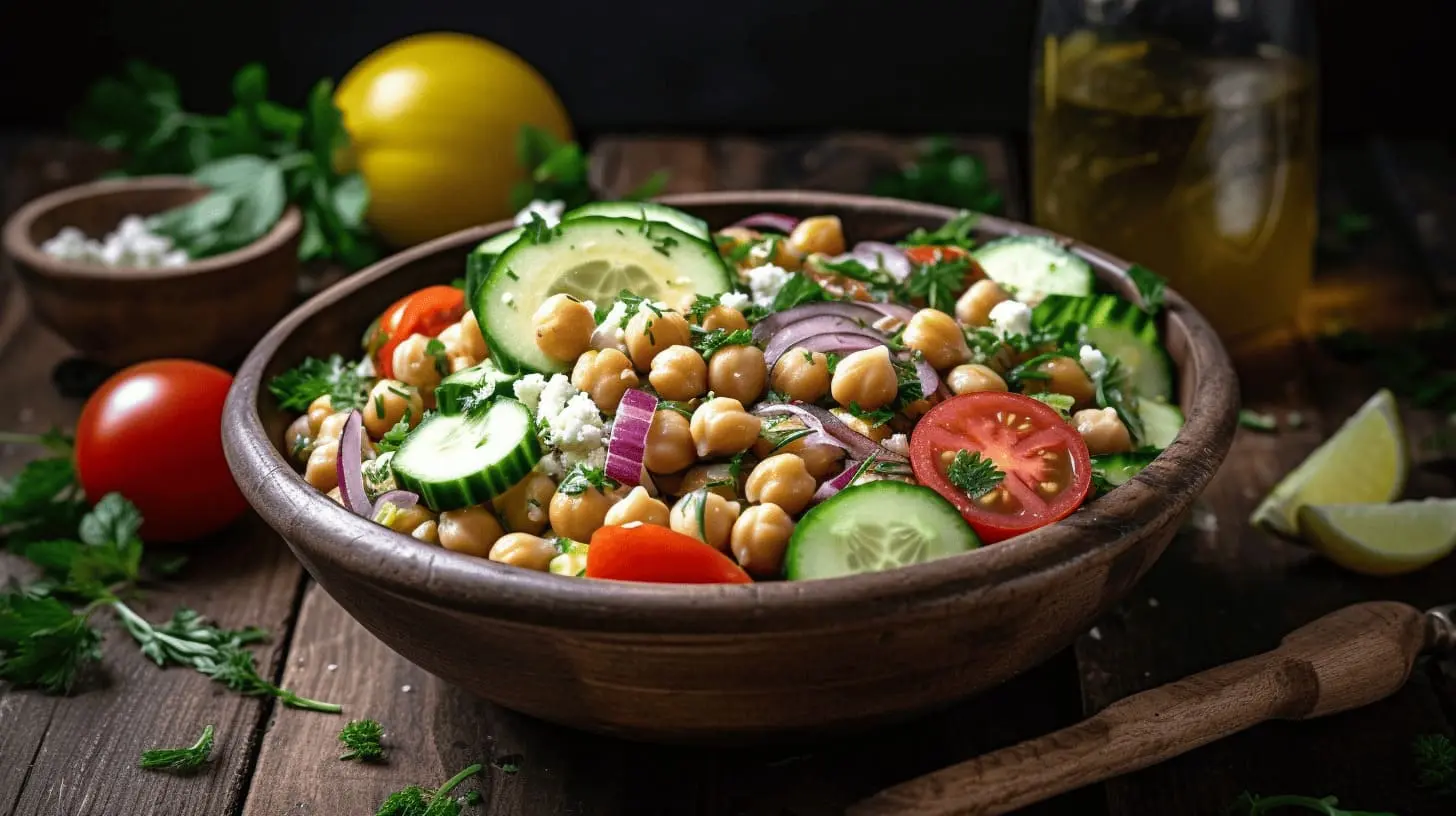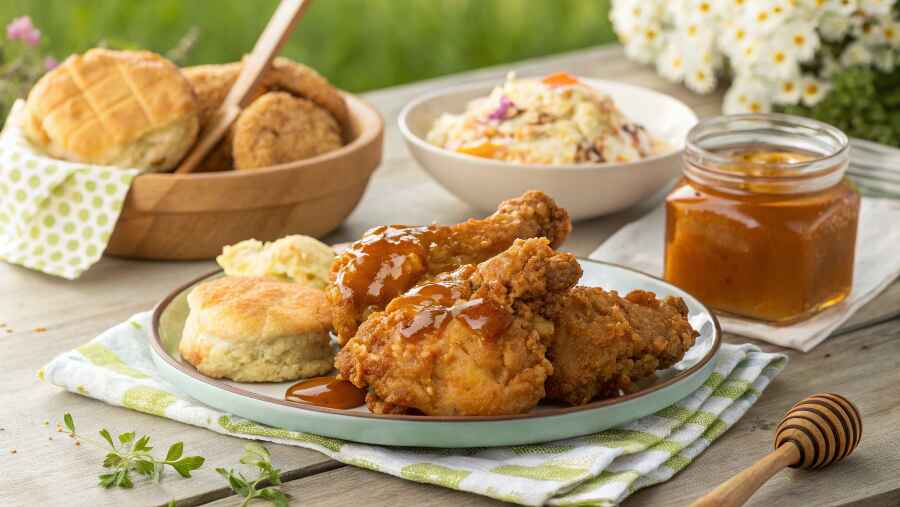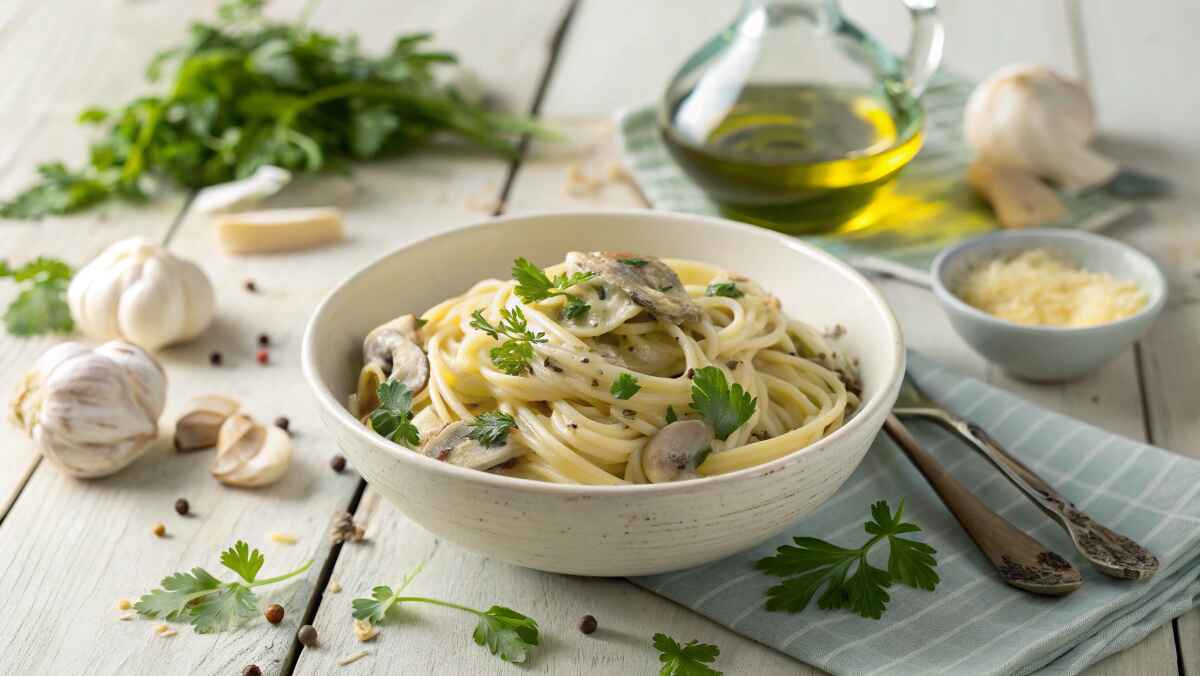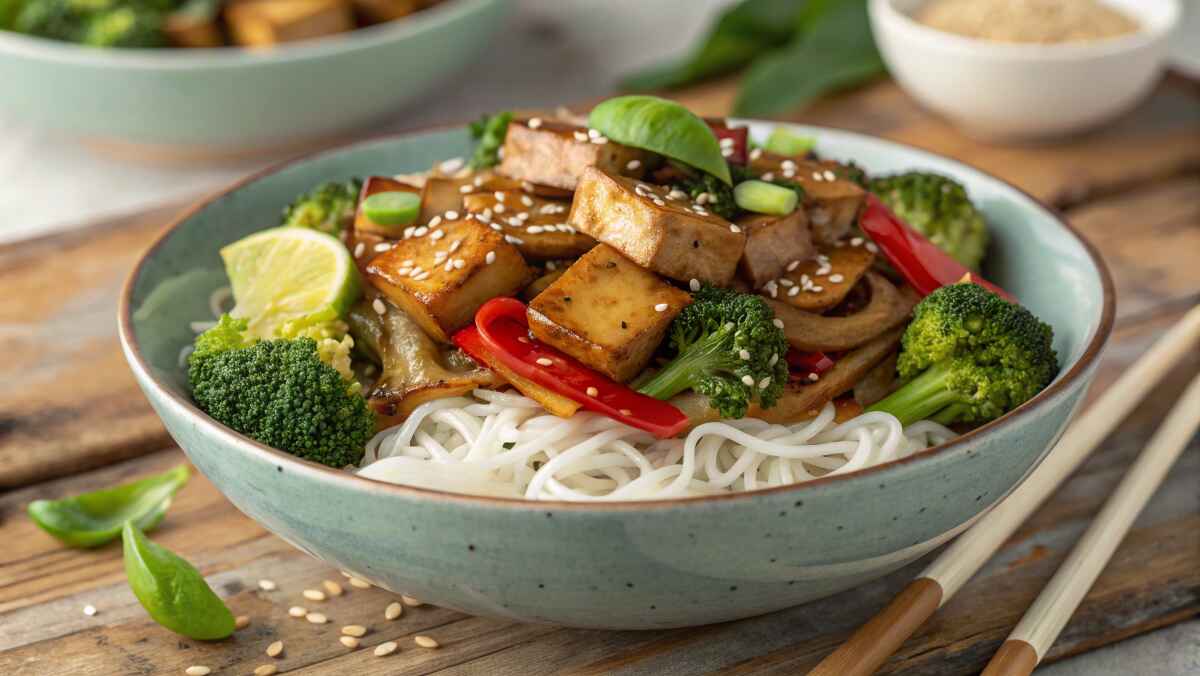Chickpea salad is a delicious and nutritious dish that satisfies multiple food groups, making it a versatile option for a balanced diet. Whether you’re aiming to meet your daily vegetable intake, add plant-based protein to your meal, or incorporate healthy fats, this salad checks all the boxes. In this guide, we’ll explore exactly what food groups does chickpea salad meet and how you can maximize its nutritional benefits.
Understanding the Five Main Food Groups
Before diving into chickpea salad, it’s essential to understand the five main food groups, as defined by dietary guidelines. These categories provide the foundation of a balanced diet:
- Vegetables: Rich in vitamins, minerals, and fiber, vegetables are crucial for maintaining overall health.
- Proteins: Protein is necessary for muscle repair, energy, and other essential body functions. It can come from both plant and animal sources.
- Grains: Whole grains provide energy, fiber, and important nutrients like B vitamins.
- Dairy (or Dairy Alternatives): Foods in this group provide calcium, vitamin D, and protein to support bone health.
- Fats (Oils and Nuts): Healthy fats, such as those found in olive oil or nuts, are vital for brain function and cardiovascular health.
By incorporating ingredients from these groups, chickpea salad becomes a comprehensive and satisfying meal.
What Food Groups Does Chickpea Salad Meet?
Chickpea salad is unique because it can cover multiple food groups depending on the ingredients you include. Below is an explanation of how this dish fits into each category.
1. Vegetables: The Core of the Salad
Vegetables form the base of most chickpea salads, providing both nutrition and a vibrant, fresh flavor.
- Nutritional Benefits: Vegetables like cucumbers, tomatoes, red onions, and bell peppers are rich in fiber, antioxidants, and vitamins. These support gut health, boost the immune system, and promote hydration.
- Pro Tip: Incorporate leafy greens such as spinach or arugula for added nutrients and variety.
For example, pairing your chickpea salad with roasted vegetables can significantly increase your daily vegetable intake. Moreover, seasonal vegetables like zucchini in summer or roasted root vegetables in winter can add a unique twist.
2. Protein: Chickpeas as the Star Ingredient
Chickpeas, a member of the legume family, are a powerhouse of plant-based protein and the heart of this dish.
- Protein Content: A single cup of chickpeas provides approximately 15 grams of protein, which is essential for muscle repair and energy production.
- Additional Benefits: Moreover, chickpeas are high in iron, magnesium, and folate, which are key nutrients for overall health.
Pro Tip: For a protein boost, consider adding grilled chicken, tofu, or quinoa to your salad. As a result, the dish becomes even more filling and nutritious.
3. Grains: Optional but Powerful Additions
Grains are not always included in chickpea salads, but they can enhance its nutritional value and texture.
- Why Add Grains? Whole grains such as quinoa, bulgur, or farro provide complex carbohydrates that release energy slowly, helping you feel full longer.
- Gluten-Free Options: If you’re gluten-sensitive, quinoa or wild rice are excellent choices.
For instance, a Mediterranean-style chickpea salad might feature quinoa for a hearty and satisfying twist. In addition, grains like couscous can add a light and fluffy texture.
4. Fats: Healthy Oils and Toppings
Healthy fats are often incorporated through dressings and toppings, making chickpea salad both flavorful and nutritious.
- Dressing: Olive oil, a staple in Mediterranean diets, is a great choice. It’s rich in monounsaturated fats that promote heart health and reduce inflammation.
- Toppings: Avocados, nuts, or seeds like pumpkin and sunflower add healthy omega-3 fatty acids and a delightful crunch.
Pro Tip: Lightly toast nuts or seeds before adding them to enhance their flavor and texture.
5. Dairy (Optional): Cheese or Yogurt-Based Dressings
Dairy is not always present in chickpea salads, but when included, it adds creaminess and tang.
- Cheese Options: Crumbled feta or goat cheese brings a salty, tangy flavor while offering additional calcium and protein.
- Yogurt-Based Dressing: Greek yogurt mixed with herbs like dill or parsley creates a creamy dressing with fewer calories compared to mayonnaise.
Pro Tip: For a vegan alternative, use tahini or plant-based yogurt as a substitute for traditional dairy ingredients.
How Chickpea Salad Aligns with Dietary Guidelines
Chickpea salad aligns with dietary guidelines by offering a balanced mix of essential nutrients. Here’s how:
- Vegetable Intake: Chickpea salad’s vegetable base ensures you’re meeting daily recommendations for fiber, vitamins, and minerals.
- Protein Power: Chickpeas provide plant-based protein, which is critical for vegetarians and vegans.
- Healthy Fats: Ingredients like olive oil and nuts deliver heart-healthy fats that support brain function.
- Customizable Grains: Adding grains like quinoa or couscous makes the dish energy-rich and suitable as a complete meal.
In addition, this dish is highly adaptable, allowing you to modify it according to your dietary preferences or the season’s freshest ingredients.
Creative Chickpea Salad Variations
To meet different dietary needs and preferences, here are a few creative variations:
1. Mediterranean Chickpea Salad
- Food Groups: Vegetables, protein, fats, and optional dairy.
- Ingredients: Chickpeas, cucumbers, tomatoes, parsley, olive oil, lemon juice, and crumbled feta.
- Why It Works: This variation is rich in fresh vegetables and healthy fats, aligning perfectly with a Mediterranean diet.
2. Grain-Boosted Chickpea Bowl
- Food Groups: Vegetables, protein, grains, and fats.
- Ingredients: Chickpeas, quinoa, roasted sweet potatoes, spinach, avocado, and tahini dressing.
- Why It Works: Including grains and sweet potatoes adds fiber and carbohydrates for sustained energy.
3. Spicy Tex-Mex Chickpea Salad
- Food Groups: Vegetables, protein, fats, and optional dairy.
- Ingredients: Chickpeas, black beans, corn, diced bell peppers, cilantro, lime dressing, and optional shredded cheese.
- Why It Works: This variation incorporates bold Tex-Mex flavors while still covering multiple food groups.
Frequently Asked Questions (FAQs)
1. Can Chickpea Salad Be a Complete Meal?
Yes! Chickpea salad covers multiple food groups and can be customized with additional protein or grains to make it even more filling.
2. Is Chickpea Salad Good for Weight Loss?
Absolutely. Chickpea salad is low in calories, high in fiber, and packed with nutrients, making it an excellent option for weight management.
3. What Are Good Substitutes for Chickpeas?
If you don’t have chickpeas, try using lentils, black beans, or white beans as a substitute.
Chickpea Salad: A Nutritional Powerhouse in Every Bite
Chickpea salad is more than just a delicious, refreshing dish—it’s a nutrient-dense meal that provides a perfect balance of protein, fiber, vitamins, and healthy fats. Whether you’re looking for a light lunch, a hearty side dish, or a meal-prep staple, this salad checks all the boxes for taste, convenience, and health benefits.
One of the best things about chickpea salad is its versatility. It naturally combines ingredients from multiple food groups, making it a well-rounded meal that supports overall health and well-being. Let’s take a closer look at what makes this salad a nutritional powerhouse:
🥣 Protein-Rich Chickpeas for Sustained Energy
Chickpeas are a fantastic source of plant-based protein and complex carbohydrates, making them an ideal ingredient for:
✔ Muscle repair and growth – Great for vegetarians and those following a plant-based diet.
✔ Sustained energy release – Prevents energy crashes and keeps you feeling full.
✔ Improved digestion – High fiber content supports gut health and regularity.
🍅 Fresh Vegetables for Essential Vitamins & Minerals
This salad includes a variety of fresh, crunchy vegetables, such as tomatoes, cucumbers, and red onions, each packed with nutrients:
✔ Tomatoes: Loaded with vitamin C and lycopene, supporting immune function and heart health.
✔ Cucumbers: High in hydrating water content and antioxidants, great for skin and digestion.
✔ Red Onions: Provide anti-inflammatory compounds that promote heart and gut health.
🫒 Heart-Healthy Fats from Olive Oil
The use of olive oil in the dressing not only enhances flavor but also adds monounsaturated fats, which:
✔ Reduce bad cholesterol (LDL) while increasing good cholesterol (HDL).
✔ Support brain function and cognitive health.
✔ Improve the absorption of fat-soluble vitamins (A, D, E, K) found in the vegetables.
🧀 Optional Feta Cheese for Extra Calcium & Flavor
Feta cheese adds a creamy, tangy contrast to the fresh vegetables and chickpeas while also providing:
✔ A source of calcium – Essential for bone health and muscle function.
✔ Probiotics – Supports gut microbiome and digestion.
✔ A protein boost – Complements the plant-based protein from chickpeas.
🥖 Optional Whole Grains for Added Fiber & Satiety
Want to turn this salad into an even heartier meal? Pair it with:
✔ Whole-grain pita or sourdough bread – Adds extra fiber and nutrients.
✔ Quinoa or bulgur wheat – Enhances protein and texture while making it more filling.
A Versatile Salad for Any Occasion
One of the best things about this chickpea salad is its flexibility. It can be enjoyed in multiple ways:
🌿 As a light main dish – Perfect for lunch or dinner, keeping you full without feeling heavy.
🥗 As a side salad – Complements grilled meats, pasta dishes, or roasted vegetables.
🌯 As a wrap filling – Stuff it into whole wheat pita or lettuce cups for a nutritious sandwich alternative.
🍞 On top of toast – Spoon it over avocado toast for an extra boost of protein and fiber.
Looking for the Perfect Pairing?
For a wholesome start to your day, pair this nutrient-packed chickpea salad with Avocado Toast Breakfast. The combination of creamy avocado, crunchy whole-grain toast, and fiber-rich chickpea salad creates a perfectly balanced meal that’s both satisfying and nourishing.
Final Thoughts
Whether you’re looking for a quick, healthy meal, a nutrient-rich side dish, or an easy meal-prep recipe, chickpea salad is an excellent choice. It’s loaded with plant-based protein, fresh vegetables, and healthy fats, making it a flavorful and well-balanced meal that supports overall wellness.
So why wait? Grab your ingredients, mix up a batch, and enjoy a refreshing, nutritious dish today! 🥗✨😊




